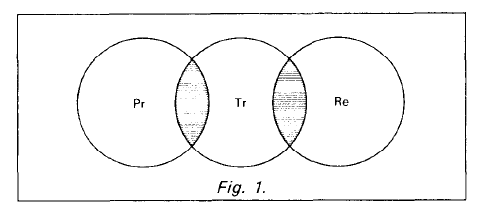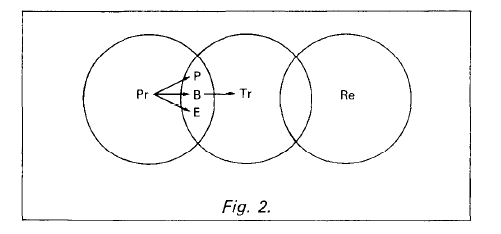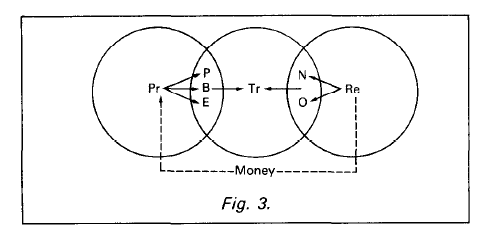Research: Research in the field of hospitality

Paper (1985) by: Ruud Reuland, Janet Choudry and Ans Fagel. Source: https://doi.org/10.1177/004728758602400486.
I have read the paper so you don't have to. The 5 biggest lessons that teach you about the essence of hospitality, tourism and leisure management.
When a guest comes into contact with an organization offering something like hospitality, three elements in the hospitality process, which we describe as situations, can be distinguished. They can be represented by three circles.

- The situation of the Provider (Pr); this is the situation of the representative (waiter, receptionist) of the restaurant/ hotel, who realizes the direct contact with the consumer.
- The situation of the Receiver (Re); the guest enters the restaurant or hotel bringing with him his own background.
- The situation of the Transfer (Tr); in this situation, created by both the Provider and the Receiver, the Transfer of hospitality is realised. This situation starts when the Receiver comes under the roof of the Provider of hospitality.
Restrictions:
- The model of hospitality is a static one. It only explains the elements that can be discerned in the hospitality offer and consumption, but not the comparative weights of all these elements.
- The model shows us that hospitality is created in the contact between Provider and Receiver, but it does not explain the actions and reactions of both parties. The model can therefore only be used to acquire a general concept of hospitality.
- The hospitality model is not suitable for identifying all the emotions and feelings of the Receiver of hospitality during the period of consumption.
The Provider offers hospitality; hospitality consists of a harmonious mixture of three elements.

- P: The material Product or product in a narrow sense; the bed for the sleepy guest, the meal for the hungry and the beer for the thirsty guest.
- B: The Behaviour and attitude of the employees who are responsible for the distribution of the material product and who come in direct contact with the guests.
- E: The Environment, such as the building, thelay-out. the furnishing and the light in the restaurant.
A certain combination of the three elements P, B and E is a hospitality formula.
The guest as a receiver of hospitality consumes the hospitality offer by going through the process: hospitality is an experience for him. This experience is based on the perception of the offered hospitality in relation to his expectations. His expectations are influenced by the Needs and Objectives that he wishes realised within the hospitality situation.

As far as the needs that have to be satisfied are concerned we can distinguish as an example:
- Hunger/ thirst (physiological need).
- Security (social need).
- Self-esteem (psychological need).
Objectives of the guest to enter a hospitality situation are more rational and can for instance be:
- To celebrate a promotion/ birthday.
- To facilitate negotiations with a business friend.
- To have a candlelit evening with your family.
Fagel (1984) has developed a method to research the way a guest goes through the hospitality process in a restaurant.
She discovered that in the experiences of the guest during the hospitality process (from entering to leaving the restaurant) three important clusters/ themes can be identified. These clusters are crucial for the experience of the guest in terms of feeling the situation as hospitable or inhospitable and strongly influence the final opinion of the guest.
The three clusters are:
- The period before entering the restaurant.
- The first five minutes.
- The period of hospitality.
If and when the phase before entering the restaurant has been completed successfully, it is important that a guest-host relation is created. The guest should - in some way - have the feeling of being welcome, of being recognized as a guest. He wants some personal attention during the first few moments of entering the hospitality process. The way he wants to be welcomed will depend on the chosen hospitality formula.
No excuse for not welcoming the guest is acceptable. Even the busiest waiter should be able - in the opinion of the guest - to welcome the new guest in a short period and ask him, for instance, for a little patience.
Moreover, a kind of indirect attention will influence the way the guest goes through the first five minutes of the hospitality process. He will study the level of care that is given to the environmental aspects of the hospitality: a clean table, acceptable light, not too noisy, and behaviour of other guests in accordance with his own standards.



